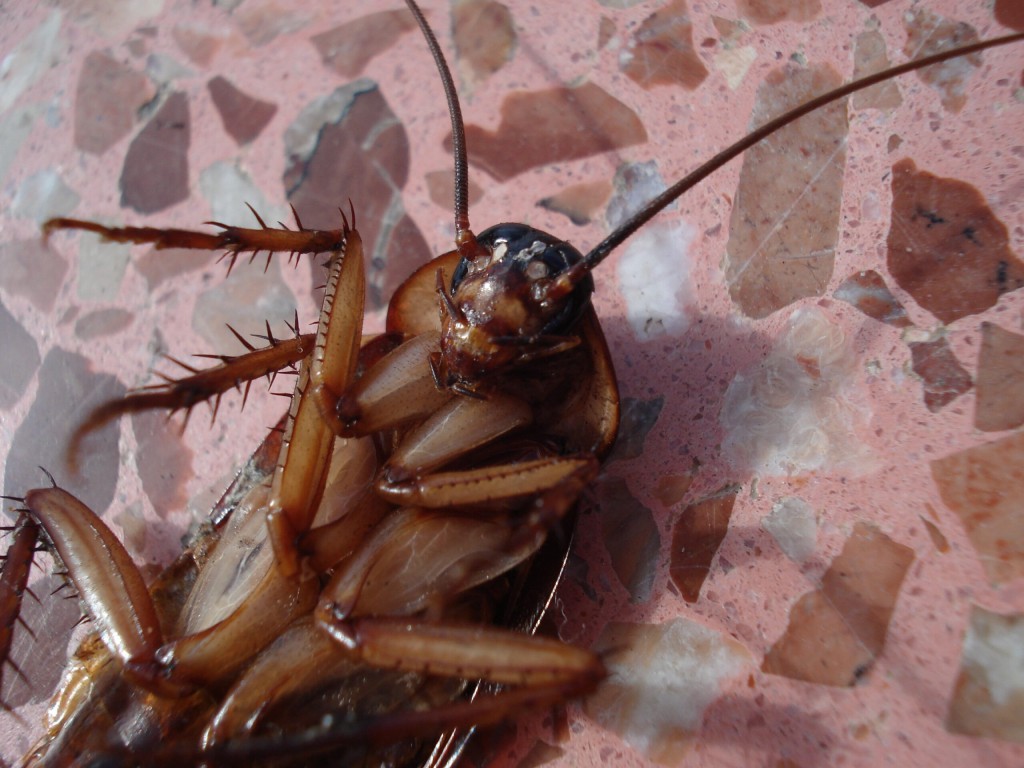Cockroaches are one of the most common insects on earth and are considered to be one of the most successful groups of animals, with their existence tracing back over 300 million years. There are approximately 3,500 species of cockroaches worldwide, 55 of which are found in the United States.
Cockroaches are attracted to warm, damp conditions and will inhabit any area where food, water and shelter are available. They are often found in kitchens, bathrooms, basements and plumbing areas. Cockroaches (and their egg cases) can easily find their way into your home on various objects including used furniture, food items, empty drink bottles and shipping cartons. Cockroaches are attracted to food sources, especially those containing starches, sugars and protein however they will eat anything that is organic including grease, garbage, cotton, wool fabrics, cardboard and even wallpaper glue!
Cockroaches live in groups and are most active at night. During the day, they can be found in cracks and crevices that are dark and moist. As well, they are attracted to porous surfaces, such as wood, cardboard and paper, because they can saturate these surfaces with their odor, attracting other roaches to the area.
Cockroaches rarely cause structural damage, however they can contaminate food and spread disease by walking over, and excreting on, food or food preparation areas. The germs that are spread by cockroaches can lead to food poisoning as well as other diseases. People with asthma may also have a negative reaction to their feces.
Below are some suggestions to help deter cockroaches and prevent an infestation:
Be sure to keep your kitchen clean. Do not allow grease, crumbs, or clutter to accumulate. Clean all surfaces including on, around, underneath and behind stoves, refrigerators, cupboards and drawers. Don’t allow dirty dishes to remain on counter tops or in the dishwasher overnight.
Make sure to wipe up cockroach specks and droppings, as these are eaten by baby cockroaches and will attract other cockroaches to the area.
Store all food in tightly sealed containers and do not leave bowls of pet food on the floor overnight. Be sure to keep garbage, compost and recyclables in tightly sealed containers.
Vacuum regularly to help remove food particles and insect eggs.
Wrap or insulate pipes with excess condensation, repair leaky faucets and pipes, ventilate bathrooms and dehumidify moist areas to reduce sources of water.
Eliminate any and all clutter to further reduce the number of areas where cockroaches might live.
When an infestation does occur, many people resort to chemical sprays and “bomb” treatments however this will not provide a long term solution. In fact, certain chemical sprays will repel roaches, causing them to avoid sprayed areas and to hide deeper inside the walls, making control even more difficult.
Rather than chemical sprays, a multiple tactic approach that includes sanitation and the use of natural insecticides, such as Red Lake Diatomaceous Earth, is often used to help control cockroaches. It is very difficult to eradicate an infestation using diatomaceous earth alone, therefore the surrounding environment must also be altered. By removing food and water sources that may be attracting the insects, you will create an environment that is much harder for cockroaches to live in.
While Red Lake Earth has not been tested specifically for use against cockroaches, diatomaceous earth is know to be effective on most crawling insects.
Diatomaceous earth works as a natural insecticide by killing insects by lacerating their waxy exoskeletons and dehydrating them. In fact, National Geographic states, “Death comes in 12 hours after insects venture into diatomaceous earth. Their skins are pierced by sharp edges of the diatoms’ siliceous shells, causing life’s juices to flow out.”
For use against insects, simply sprinkle Red Lake Diatomaceous Earth in the cracks and crevices throughout your home as well as underneath appliances and inside void areas (such as wall voids and voids around cabinets). Apply only a thin layer of dust, as heavy deposits may repel cockroaches and other insects. Take precautions to assure that the diatomaceous earth does not come in contact with food meant for human consumption and that you do not inhale large amounts of dust.
For more detailed application instructions, please see: APL’s Food Grade Diatomaceous Earth Now Approved in Canada As Natural Insecticide
Red Lake Diatomaceous Earth is safe to use around all types of animals (RLE is registered for use in animal feed as an anti-caking agent and flow aid and is therefore safe to use around animals, even if consumed).
Mixing diatomaceous earth with an attractant, such as food, may help in eliminating pests by further lacerating their insides.
Diatomaceous earth is only effective when dry.
Please note: This information has been gathered from various online sources and is not meant to replace the advice of a trained pest control professional.



